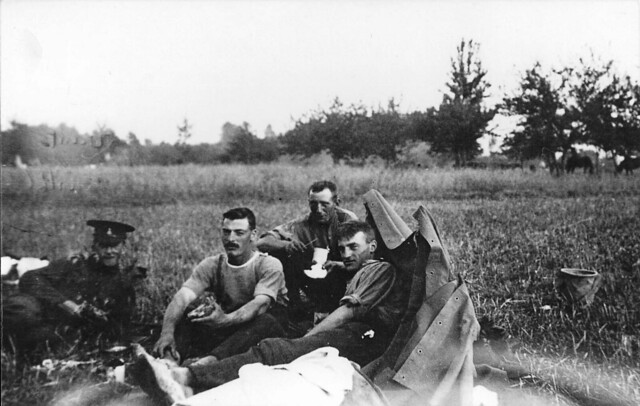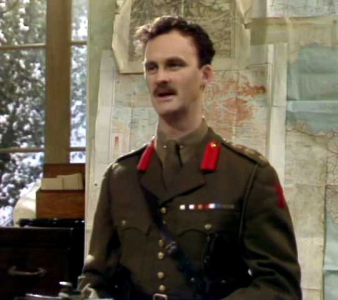31st August 1914
A trying ten and a half hour march covered just 10 miles. The day was tropical again. Delays were caused mainly by the habit of artillery units stopping and feeding every time they came across water.
While his troops struggled, Gleichen trotted ahead to recce Morienval. Here he enjoyed “an excellent potage aux choux and a succulent stew, with big juicy pears to follow, all washed down by remarkably good red vin de pays”. He’s a boy, is our Count Gleichen.
The 15th Brigade was marching to their original billets in Béthisy, on the southern tip of the Compigne Forest, when they were redirected to Crépy-en-Valois. The reason for their new destination was that German cavalry had entered Béthisy, chasing out the billeting parties. The Germans were later cleared out by British cavalry. But it appeared that the enemy was getting closer.

If this photo is from the 31st August then they were bivouacking in Crépy-en-Valois. I cannot find a Bontreuil anywhere in France, nor a nearby Montreuil which would be the obvious alternative. Other nights around this time they were in billets. The only other date it could be was the 28th August when they bivouacked in an orchard at Pontiose-Lés_Noyon
Once at Crépy-en-Valois they bivouacked in fields in a south-west district called St Agathe. There’s a park in this vicinity with the same name so I’ve plonked Frank there for the night. Gleichen’s gastronomic tour of North East France comes to a disappointing end when he spots a couple of bottles of wine bottles and glasses. “Nearly speechless with thirst, we rushed at them. They were empty!”.

